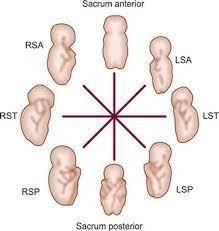A nurse is caring for a client who is 2 weeks postpartum. The client tells the nurse, "I feel really down and sad lately. I have no energy and I feel like I'm going to cry." Which of the following actions should the nurse take first?
Reinforce teaching about ways to increase rest and sleep.
Arrange for counseling to help the client cope with the stress of being a parent.
Request a prescription for antidepressant medication.
Use a postpartum depression screening tool with the client.
The Correct Answer is D
Choice A rationale: While adequate rest and sleep are essential postpartum, the client's symptoms of feeling down and sad may be indicative of postpartum depression and should be further evaluated.
Choice B rationale: Counseling may be helpful, but the priority is to first assess and screen for postpartum depression before making additional recommendations.
Choice C rationale: While antidepressant medications might be necessary for postpartum depression, the initial step should be to assess and screen for depression using the appropriate tool.
Choice D rationale: The client's statement and symptoms raise concerns about possible postpartum depression. Using a postpartum depression screening tool will help the nurse assess the severity of the client's symptoms and determine the appropriate course of action.
Nursing Test Bank
Naxlex Comprehensive Predictor Exams
Related Questions
Correct Answer is C
Explanation
Choice A rationale: A breech presentation means that the baby's buttocks or feet are the presenting part, not the shoulder.
Choice B rationale: Vertex presentation refers to a head-down position of the baby with the occiput (back of the head) as the presenting part. In the RSA position, the baby is in vertex presentation, but the specific part facing the mother's right side is the shoulder.
Choice C rationale: RSA (Right Sacrum Anterior) indicates that the fetus is in a vertex presentation with the head pointing down and the back of the baby's head (occiput) facing the mother's right side. The shoulder is the presenting part of this position.
Choice D rationale; Mentum refers to the chin of the baby. A mentum presentation (also called face presentation) means that the baby's face is the presenting part, not the shoulder.

Correct Answer is B
Explanation
A. SGA newborns often have increased circulating RBCs (polycythemia) due to chronic hypoxia in utero, not decreased RBCs.
B. Blood glucose instability (hypoglycemia) is common in SGA newborns due to decreased glycogen stores and increased metabolic demands.
C. Retinopathy of prematurity is more commonly associated with preterm infants and prolonged oxygen therapy rather than SGA status.
D. SGA newborns typically have a scaphoid (sunken) rather than a well-rounded abdomen due to decreased subcutaneous fat stores.
Whether you are a student looking to ace your exams or a practicing nurse seeking to enhance your expertise , our nursing education contents will empower you with the confidence and competence to make a difference in the lives of patients and become a respected leader in the healthcare field.
Visit Naxlex, invest in your future and unlock endless possibilities with our unparalleled nursing education contents today
Report Wrong Answer on the Current Question
Do you disagree with the answer? If yes, what is your expected answer? Explain.
Kindly be descriptive with the issue you are facing.
